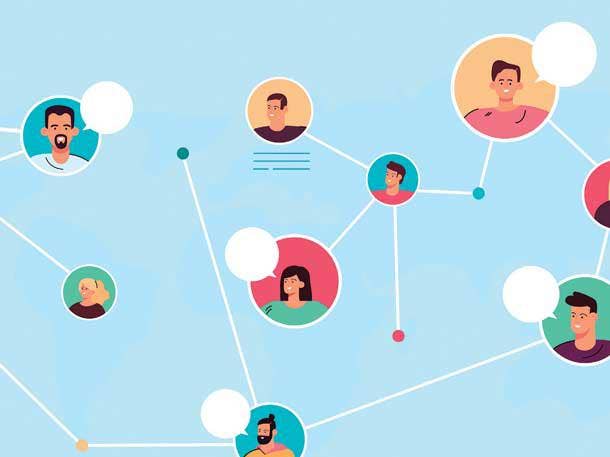10 Important DEI Trends For The Channel To Keep Top Of Mind
For a growing number of solution providers, diversity, equity and inclusion initiatives are becoming an important component of their long-range strategies. Here’s a look at 10 key DEI trends that are impacting companies across the channel today.

For a growing number of channel businesses, diversity, equity and inclusion initiatives are becoming an important, transformational component of their long-range strategies.
“Unisys has long understood its role to build and foster a compassionate, inclusive culture that drives innovation and opportunities for our people, communities and environment,” said Katie Ebrahimi, senior vice president and chief human resources officer at Blue Bell, Pa.-based Unisys. “To truly have the diversity that represents society at large, we need to implement initiatives to address equity.”
Diversity, equity and inclusion has moved to the top of many company agendas, especially since the events of 2020. But there is still much work to do. “We have yet to see real major progress in the outcomes related to diversity and inclusion in organizations,” said Sona Khosla, chief impact officer at Benevity, a developer of corporate purpose applications.
DEI can cover a broad range of issues and an equally broad range of ways that businesses are responding and implications for the steps they take to address DEI.
According to an October 2021 report jointly prepared by research organization WBR Insights and compliance training firm Traliant, 89 percent of all companies already had a formal DEI strategy in place with the remaining 11 percent planning to implement one within 12 months. The report was based on survey results from 300 U.S. companies across all industries, including the IT industry. The survey also found that 79 percent of all companies planned to allocate more budget and/or resources to DEI in 2022.
Here’s a look at 10 key DEI trends that are impacting companies across the channel today.

Employees Want To Be Actively Involved
Business initiatives within organizations traditionally follow a top-down approach with management setting the strategy. While some DEI eff orts have followed a similar path, the real impetus for DEI is coming from employees. “We’re finding that what employees really want is the opportunity to actually lead those [DEI] eff orts themselves,” said Khosla, at Calgary, Alberta-based Benevity, whose software is used to foster employee engagement and inclusiveness through social responsibility.
One approach to addressing employees’ desire to move DEI forward is the creation of employee groups, what some call “employee resource groups” (ERGs) or “affinity groups,” that bring together employees with similar backgrounds or interests— and employees who support them—to provide mutual support and champion change to foster a diverse, inclusive workplace, according to the Great Place to Work website.
Unisys has created nine Associate Impact Groups— voluntary, employee-led groups “that foster a diverse, inclusive workplace aligned with our mission, beliefs and goals,” Ebrahimi said in a written response to CRN questions. “They represent the rich diversity at Unisys.” The Unisys AIGs represent different gender, ability, race and ethnicity communities and include the Unisys Pride AIG, the Women+ Network AIG, the BlackU AIG and the Veteran AIG.
Solution provider CDW, meanwhile, operates what it calls Business Resource Groups, which serve as forums for employees to “make their voices heard, build awareness, celebrate their affinity area, serve their communities, bolster allyship and provide perspective on diversity and inclusion initiatives,” according to the company’s 2021 Environmental, Social and Governance report. BRGs include the Women’s Opportunity Network, the Hispanic Organization for Leadership & Achievement and Black Excellence United.
Khosla said as many as 90 percent of U.S. employers have some kind of ERG or affinity group effort and Benevity data shows a significant “groundswell” of ERG activity over the last year and a half with about one-third of companies reporting growth in ERG communities.

Management Needs To Show Leadership
While rank-and-fi le employees are driving DEI within many companies, they expect more from high-level executives than press releases that often don’t result in real outcomes. And they want to see top executives devoting corporate resources to DEI initiatives.
“Employees absolutely want their employers to be making real investments. They want them to be making more than statements and [actually] taking action,” Khosla said. But there is clearly room for improvement in terms of top executive buy-in. Benevity research found that 80 percent of employees believe that company leadership has a responsibility to take action to address DEI issues, but 47 percent did not see management taking these steps.
The WBR Insights/Traliant survey found that only 13 percent of respondents described their CEO and/or executive management as “actively endorsing and advancing DEI.” The majority, 58 percent, said, “Though not very visible, our executives are involved in decisions about endorsing and advancing DEI.” And 29 percent said that while executives supported DEI, “they are not directly involved in endorsing or advancing it.”
Only 44 percent of those surveyed said the executive team “owned” their company’s DEI strategy while 48 percent said it was owned by the HR team. (Eight percent said no team owned the DEI strategy.)

DEI Training Is Crucial
DEI training is “the easiest way to communicate what to do (and not do) in the workplace,” noted a report from i-Sight, an Ottawa, Ontario-based developer of applications for uncovering, investigating and preventing incidents, fraud and other misconduct in the workplace. “You can model real-life scenarios for employees to help them understand their biases, learn how to step in when they see harassing behavior and see the value in diversity,” i-Sight noted.
Sixty-five percent of organizations are conducting DEI training, according to the WBR/Traliant survey. The same survey found that only 9 percent described DEI training as “very important” while 61 percent said it is “important” and 30 percent said it is “somewhat important.”

DEI Is Important To Prospective Employees
Finding, hiring and retaining qualified employees is a major challenge for channel companies today. And there’s evidence that employee candidates—especially those of the millennial and Gen Z generations—take a company’s DEI culture into consideration when choosing where they want to work. “We see people making different choices about the companies that they want to work for,” said Khosla.
“More than ever before, job seekers are looking for an employer that values DEI,” noted the i-Sight report. “Whether they belong to a marginalized group or not, candidates want to work for a welcoming, safe workplace.”
I-Sight recommends starting by developing “a well-crafted statement” for a company’s website and job postings that matches its branding, mission and values.
One example is the diversity statement posted by enterprise application developer Workday: “Our approach to diversity is simple: it’s about embracing everyone. From cultivating a culture where all employees can bring their best selves to work to deploying diversity initiatives that support all, we’re doing what it takes to build a more equitable workplace and world.”

Look At Remote Work Through A Diversity Lens
Millions of employees began working from home in the immediate wake of the COVID-19 pandemic, and businesses have since adopted some form of a hybrid office-remote work model. But companies need to consider the DEI implications of the remote-office work practices they adopt.
For some employees, working from home may not be an optimal choice, noted the i-Sight report. They may live in an area that lacks a reliable internet connection or may not own all the electronic devices needed to work productively. Or they may not have a quiet, ergonomic workspace.
On the flip side, it may be difficult for employees with caregiving responsibilities or who moved away from the company office for financial reasons to return to the office. And some employees concerned about discrimination or harassment in the workplace might feel safer working at home.

Focus On Getting Women Back Into The Workforce
Almost 3 million women have left the labor force since the start of the COVID-19 pandemic due to layoffs, the need to care for family members and other factors. A significant DEI trend this year is bringing women back into the workforce, noted the i-Sight report. The challenge is that some women might be hesitant to return due to family considerations or discomfort with office environments. Or their life priorities or “must-haves” for jobs have changed.
The report said that to help these women re-enter the workforce, businesses must take certain steps such as providing flexible hours and remote work options to accommodate child care and family obligations. They also should offer paid sick leave, vacation and paid time off.

Don’t Ignore The Customer Perspective
Just as potential employees are considering DEI when choosing employers, prospective customers are increasingly looking to buy from, sell to and partner with companies with strong DEI cultures.
CDW launched its business diversity program in 2007 and since then has spent more than $20 billion—including $3.4 billion in 2021—with small and diverse businesses. That includes minority-owned, woman-owned and small disadvantaged businesses including manufacturers, distributors and service providers. CDW is part of the Billion Dollar Roundtable, a group of U.S.-based companies that procures more than $1 billion annually from such businesses.

Carefully Collect Employee Demographic Data
“What gets measured gets done,” goes the old saying, and many businesses and organizations are doing just that to gauge their DEI progress. CDW, for example, notes in its 2021 ESG report that its global workforce is 68 percent male and 32 percent female, and that in the U.S. the company’s workforce is 72 percent white and 28 percent “professionals of color.” The 12 members of CDW’s Executive Committee, meanwhile, are 50-50 male-female, and 58 percent white and 42 percent “professionals of color.”
“Collection and analysis of employee and applicant data is a key part of the DEI strategy,” said Unisys’ Ebrahimi. But she noted that with increasingly comprehensive data privacy requirements and regulations being established locally, nationally and internationally, businesses must proceed carefully when collecting demographic information. And while characteristics such as race and disability status may be easier to identify, data collection becomes more of a challenge when measuring characteristics like sexual orientation, religion, caste, personality type and socioeconomic status, the Unisys executive noted.
“As DEI practitioners gather data, they need to be clear on the purpose and the use of the data and on how to protect privacy in the process,” Ebrahimi said.

Donations To DEI Causes Have Dropped
Benevity’s research showed that prior to the events of 2020, donations to DEI and social justice organizations accounted for about 3.3 percent of all business donations. That spiked to almost 50 percent in 2020, but in 2021 dropped back down to 5.2 percent.
Under its Social Impact program, CDW provides financial contributions, employee volunteers and technology expertise to advancing what the company calls “digital equity.” Benefiting organizations include AllStarCode, Girls Who Code and One Million Degrees.

Go Beyond DEI To Include ‘Belonging’
Diversity means increasing the number of under-represented groups within an organization while equity is removing discrimination and giving employees the tools they need to succeed. Diversity and equity are achieved by establishing organizational policies, practices and procedures.
But the purpose of DEI programs isn’t just to improve diversity metrics within a workplace, noted the WBR Insights/Traliant report. Some businesses and organizations are taking inclusion to the next level and adding “belonging” to their DEI goals.
“In workplaces across all industries, employees are transitioning to a new phase from inclusion to belonging where people do not just want to feel included but want to be accepted for their authentic self,” said Ebrahim at Unisys. “This means employees need to feel safe and comfortable in bringing their whole selves to work. There is an opportunity for organizations to create psychological safety for everyone to be themselves,” she said. Unisys uses an “Inclusion Index” to measure employee perspectives to see whether they feel they can be themselves at work.
That means creating a work environment where diversity is not just a goal, but something to be celebrated.
It also means proactively identifying, addressing and routinely mitigating unconscious bias and microaggressions – something that only 12 percent of organizations now do, according to the WBR Insights/Traliant survey.